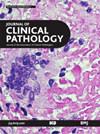使用血清指数需要考虑的一些问题
IF 2.5
4区 医学
Q2 PATHOLOGY
引用次数: 0
摘要
1 2 由于血红蛋白吸收波长在 300 至 600 纳米之间的光,溶血会对吸收波长相近的分析物 (如铁、脂肪酶)造成直接的分光光度干扰。溶血本身会增加血清或血浆中细胞内分析物(如钾、乳酸脱氢酶和天门冬氨酸氨基转移酶)的浓度,反之则会稀释细胞外分子(如葡萄糖和钠)。在某些情况下,了解标本溶血的程度有助于合理解释异常或意外的检测结果。使用自动化分析前流程检测病人标本中的溶血(H 指数)、黄疸(I 指数)和脂血(L 指数)已取代了目测检测3 4 。在高通量实验室中,不可能对收到的每个标本都进行实际检查。5 在这里,"高 "H 指数被设定为 >90,在罗氏仪器上相当于 0.9 克/升(56 微摩尔/升)的血红蛋白浓度。罗氏 H 指数的测量范围为 5-1200 毫克/分升(约 3-745 微摩尔/升),90 毫克/分升的临界值可能相对较低。该指数设置得越低,"溶血 "样本出现的频率就越高,实验室人工检测样本所需的时间也就越长。理想情况下,病人血清/血浆中不会出现此类干扰物,但遗憾的是,它们确实存在。...本文章由计算机程序翻译,如有差异,请以英文原文为准。
Some issues to consider with the use of serum indices
Haemolysis is a preanalytical interference commonly encountered in specimens drawn for laboratory testing.1 2 As haemoglobin moieties absorb light between 300 and 600 nm, haemolysis can cause direct spectrophotometric interference in assays which absorb at similar wavelengths (eg, iron, lipase). Haemolysis itself can increase the concentration of intracellular analytes in serum or plasma (eg, potassium, lactate dehydrogenase and asparate aminotransferase) and conversely dilute extracellular molecules (eg, glucose and sodium).1 Therefore, reliable detection of haemolysis is an important prerequisite to the production of reliable laboratory test results. In some instances, knowing the degree of specimen haemolysis can help rationalise aberrant or unexpected test results. The use of automated, preanalytical processes for the detection of haemolysis (H-index), icteric (I-index) and lipaemia (L-index) in patient specimens has superseded their visual inspection.3 4 This is largely due to advances in instrumentation driven by increased demands on our medical laboratory services. In a high throughput laboratory, it is impossible to physically examine every specimen received. Aside from this, visual inspection of specimens is considered arbitrary at best.3 4 In this case, this New York-based laboratory uses two operators to examine specimens when the automated H-index is elevated.5 Here, the ‘high’ H index is set at >90, corresponding, on Roche instrumentation, to a haemoglobin concentration of 0.9 g/L (56 µmol/L). With a Roche H-index measuring range of 5–1200 mg/dL (~3–745 µmol/L), this cut-off of 90 mg/dL could be perceived as relatively low. The lower this index is set the more frequently ‘haemolysed’ samples will be encountered and the more laboratorian time is required for manual specimen inspection. Ideally, such interferents would not be present in patient serum/plasma, but alas they are. …
求助全文
通过发布文献求助,成功后即可免费获取论文全文。
去求助
来源期刊
CiteScore
7.80
自引率
2.90%
发文量
113
审稿时长
3-8 weeks
期刊介绍:
Journal of Clinical Pathology is a leading international journal covering all aspects of pathology. Diagnostic and research areas covered include histopathology, virology, haematology, microbiology, cytopathology, chemical pathology, molecular pathology, forensic pathology, dermatopathology, neuropathology and immunopathology. Each issue contains Reviews, Original articles, Short reports, Correspondence and more.

 求助内容:
求助内容: 应助结果提醒方式:
应助结果提醒方式:


